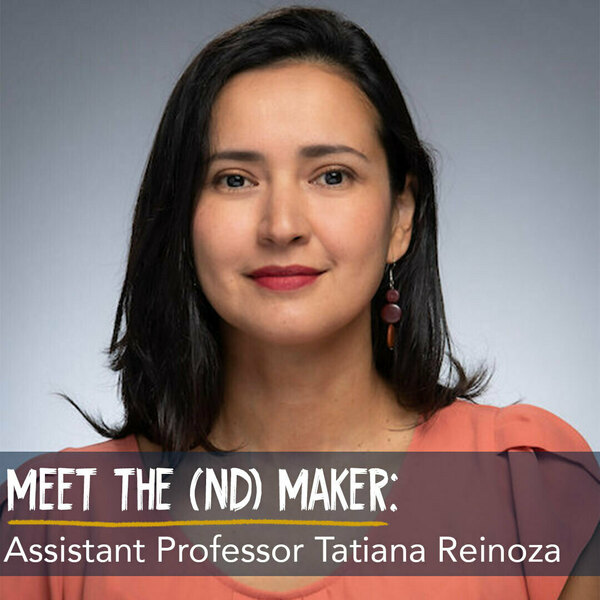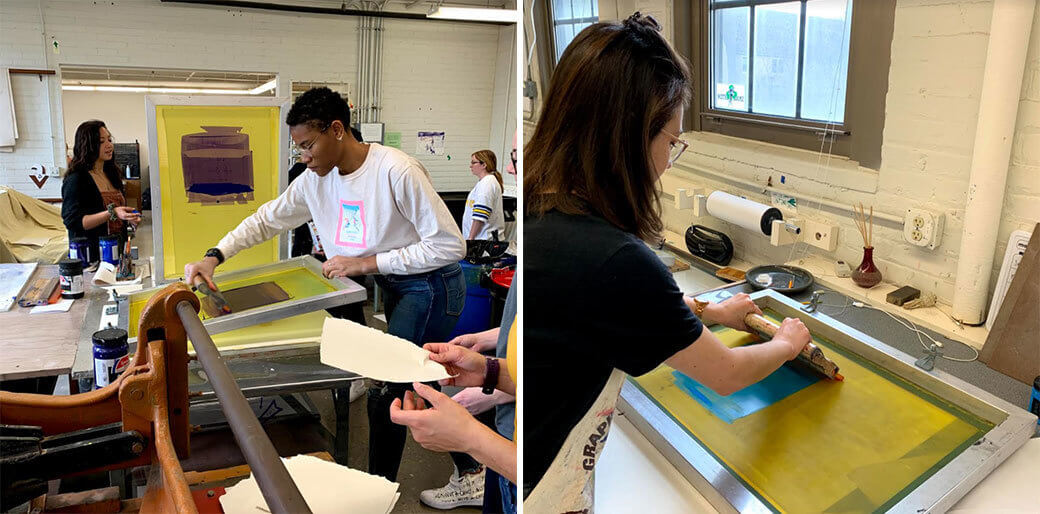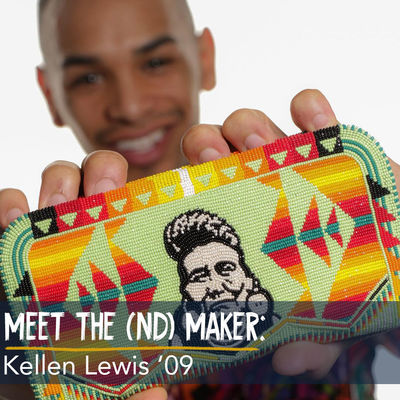

During Professor Tatiana Reinoza’s undergraduate years in Sacramento, CA, she had the opportunity to study with an art collective known as the Royal Chicano Air Force (RCAF).
Reinoza, now an assistant professor in Notre Dame’s Department of Art, Art History & Design, had immigrated with her family from El Salvador during the country’s civil war. Reinoza says that her time working with the RCAF, which had been active in creating propaganda for Cesar Chavez and the United Farm Workers Movement through posters and murals, inspired her future doctoral studies.
“That’s what got me into this politically active, sort of social justice-themed art,” she says. “My dissertation was titled Latino Print Cultures in the United States, and it looked at how this movement evolved and how socially-oriented it was at first, serving organizations like United Farm Workers.”
Reinoza completed her master's and Ph.D in art history at the University of Texas at Austin, and went on to complete a postdoctoral fellowship at Dartmouth. She then made the move to Notre Dame, where she had made previous connections with faculty in the Institute for Latino Studies.
In 2015, Reinoza curated an exhibition for the Snite Museum of Art on campus, and was recruited as a faculty member a few years later.
Among other courses at Notre Dame, Reinoza teaches one called Borderlands Art and Theory, which looks at contemporary art practices in relation to borders, and more specifically, the U.S.-Mexico border. Students are interested in the contemporary issues studied in the course, which also provides a historic context.
“I think part of the draw for students to this class is the Catholic mission of the University, to stand in solidarity with marginalized members of society,” she says. “The Central American refugee crisis has been in the news a lot, and the opportunity to delve into that through art appeals to our students. The issues we’re studying are happening right now.”
Reinoza also teaches the Latinx Art & Activism course, in which students are able to use the Snite’s extensive collection of Latino art as primary sources for their studies. The class focuses on radical print media, including comics, posters, prints, and zines, and how artists adopt these to mobilize people around social justice issues. Students in this class make prints themselves, which Reinoza says they don't necessarily expect from an art history course.

“It helps them realize how hard it is to work collaboratively and gets them to understand how young people their own age were using this medium to mobilize. A lot of them chose issues they felt very strongly about, like climate justice and feminism, for their projects,” she says.
Reinoza is currently working on a book about the history of graphic arts in Latino communities and the use of the printmaking medium as a decolonial tool.
Though she studied studio art for her bachelor's degree, Reinoza says that she doesn’t make a lot of art herself right now—aside from drawing with her 11-year-old at home. She hopes to use the Latino art resources throughout the Midwest, including in Detroit and Chicago, as teaching tools in the coming years.
“I know some of the issues we talk about related to race, class, and gender can be hard to talk about, and I appreciate that ND students are open and curious,” Reinoza says. “I’m impressed with the strength of the Latino Studies program at Notre Dame, and with the cross collaboration with art faculty. The cross-cultural leadership programs have some real world transformative possibilities, and it’s wonderful to work at a place that has that kind of ethical aim and support.”

Learn More
Meet four more ND Makers:
- Kellen Lewis ’09, Artist and Holistic Fitness Enthusiast Says Notre Dame Taught Him “How to Be”
- Isabella Di Bono '21 Makes Abstract Paintings Experiential
- Meet the (ND) Maker: Stella Moon '20 Draws Parallels Between Sculpture and Buddhist Rituals
- Meet the (ND) Maker: Jackson Wrede '18 Combines Pop Culture and Fine Art in "Pop Collage" Style Paintings
Originally published by at admissions.nd.edu on June 09, 2021.